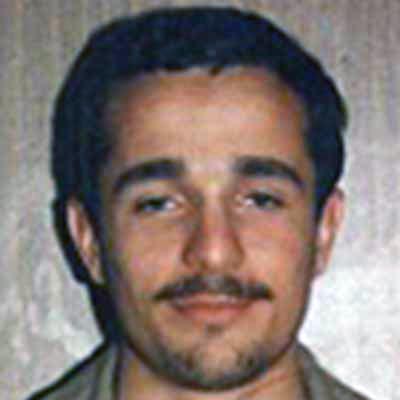Ebrahimi Saryazdi, Muhammad
Masoumeh Abedini
299 بازدید
Seyyed Muhammad Ebrahimi Saryazdi (1962-1986) served as the Deputy Commander of the 18th Ghadir Division during the Iran-Iraq War.
Born in 1962 in Anar, Rafsanjan County, Ebrahimi Saryazdi completed his primary and secondary education in his hometown. After his family relocated to Yazd, he pursued his education in civil engineering at a technical school in Yazd.
During the years leading to the victory of the Islamic Revolution, Ebrahimi actively participated in popular demonstrations and rallies against the regime. On November 22, 1980, following the victory of the Islamic Revolution, he joined the Islamic Revolutionary Guard Corps (IRGC) and volunteered for deployment to Kurdistan. He then completed advanced military training and map reading & navigation courses at Shahid Beheshti Barracks in Tehran. Afterward, Ebrahimi was deployed to the front lines in the south, where he was tasked with reconnaissance missions near Susangerd. During one of his patrols, his leg was injured and therefore he returned to Yazd for treatment. However, he rejoined the forces on the front lines before fully recovering.
In 1982, Ebrahimi was appointed as the Operations Commander of the IRGC units in Yazd. Seven months later, he was appointed as the Executive Officer of the Saheb al-Zaman (as) Headquarters. On September 23, 1983, he became the Operations Commander of the 18th Ghadir Division, and on August 28, 1986, he was promoted to Deputy Commander of the 18th Ghadir Division.
Ebrahimi participated in key operations, including Kheibar, Badr, Quds 5, Valfajr 8, and Karbala 4 and 5. Due to his expertise in map reading, he often worked in the operation room, preparing strategic plans that drew the attention of the IRGC authorities. During Operation Kheibar, when a part of the operational area was under Iraqi control, he asked the combatants to draw a sketch of the area. Then, by outlining a map, he became the first person to breach the enemy's trench.
Ebrahimi got married in 1986. “Before the wedding, he was talking about the possibility of going to the front lines, where there is the risk of martyrdom, capture, or disability and asked if I was willing to marry him under such circumstances, to which I responded positively. During our nine-month married life, he spent less than four months at home”, says Ebrahimi’s wife.
Finally, on January 28, 1987, during Operation Karbala 5, Ebrahimi was martyred after he was struck by shrapnel from an artillery shell when moving with his radio operator towards the front line in Shalamcheh. His son, Seyyed Muhammad Ali, was born after his martyrdom. Before his martyrdom, Ebrahimi had also been awarded the status of the wounded-in-action soldier due to his injuries. His body remained missing for a long time until it was returned to the country on July 11, 1996, following an exchange of Iranian martyrs and Iraqi casualties.[1] After a funeral, he was laid to rest in the Martyrs' Cemetery of Yazd.
[1] A Summary of an article published in the Sacred Defense Encyclopedia, Vol. 1, Tehran, The Center of Encyclopedia of the Sacred Defense Research Institute, 2011, Pp. 273-274.



